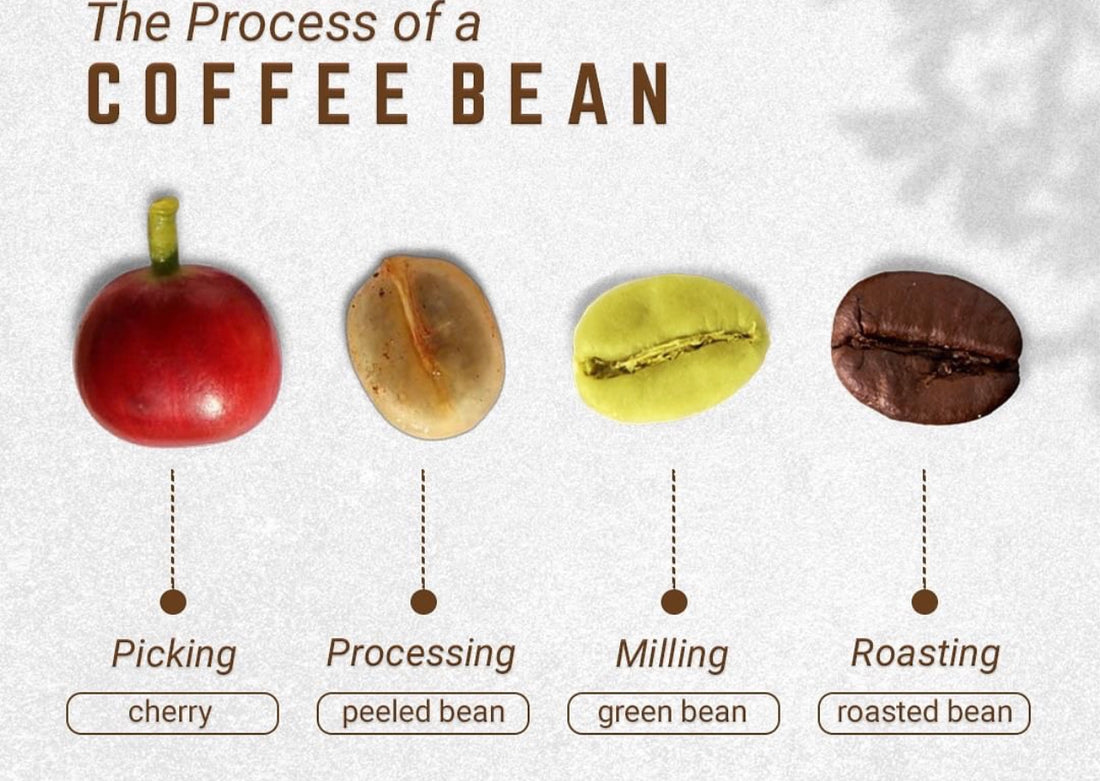There's something magical about the aroma of freshly brewed coffee that captivates our senses and kickstarts our day. But have you ever wondered about the journey that coffee beans undergo before they reach your cup? Join us as we embark on a fascinating exploration of the coffee process—from the cultivation of beans to the aromatic bliss in your morning mug.
- Cultivation:
The journey begins in lush coffee plantations situated in the tropical regions of the world, commonly known as the Coffee Belt. Arabica and Robusta are the two primary species of coffee beans cultivated. Arabica, known for its nuanced flavors and higher acidity, thrives at higher altitudes, while Robusta, with a stronger and more bitter taste, grows at lower elevations.
Coffee plants take several years to mature, and the cherries they produce contain the coffee beans. Harvesting is a meticulous process, often done by hand to ensure only ripe cherries are picked.
- Processing:
Once harvested, the coffee cherries undergo processing to extract the beans. There are two main methods: dry processing and wet processing.
-
Dry Processing: In this method, the whole cherries are spread out in the sun to dry. The dried cherries are then mechanically hulled to reveal the beans within.
-
Wet Processing: Here, the cherries are pulped to remove the outer skin, and the beans are then fermented to break down any remaining pulp. After washing and drying, the beans are ready for the next stage.
- Milling and Grading:
The dried beans are transported to milling facilities where they are hulled to remove any remaining layers of parchment. This stage also involves grading the beans based on size and quality. Higher quality beans often fetch a premium price in the market.
- Roasting:
One of the most critical stages in the coffee process is roasting. The green coffee beans, as they are known at this stage, are roasted to perfection. Roasting not only brings out the flavors but also transforms the chemical composition of the beans. The roast profile—ranging from light to dark—greatly influences the taste, aroma, and body of the coffee.
- Grinding:
Once roasted, the beans are ground to the desired consistency. The grind size is crucial and varies depending on the brewing method. Coarser grinds are suitable for methods like French press, while finer grinds are ideal for espresso.
- Brewing:
Finally, the ground coffee is brewed to extract its rich flavors. This can be done through various methods such as drip brewing, espresso, French press, pour-over, and more. Each method imparts a unique character to the coffee, allowing enthusiasts to customize their brewing experience.
From the sun-drenched plantations to the expertly crafted cup, the journey of coffee is a testament to the meticulous care and expertise involved in its production. Next time you savor that morning cup, take a moment to appreciate the incredible journey these beans have undertaken to bring you the perfect brew. The world of coffee is vast and diverse, and each cup tells a story of the hands that cultivated, processed, roasted, and brewed it—a journey that encapsulates the essence of this beloved beverage.

